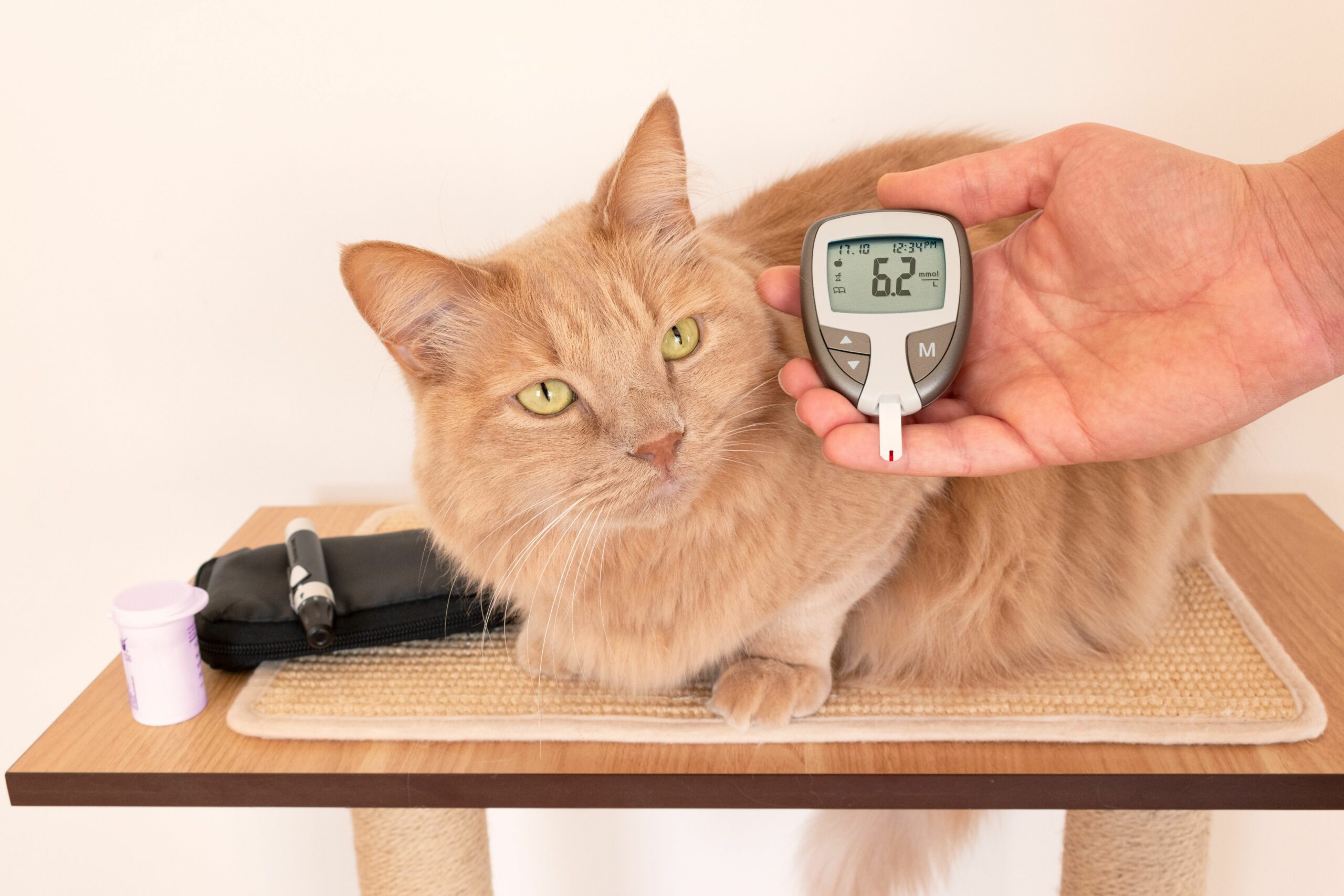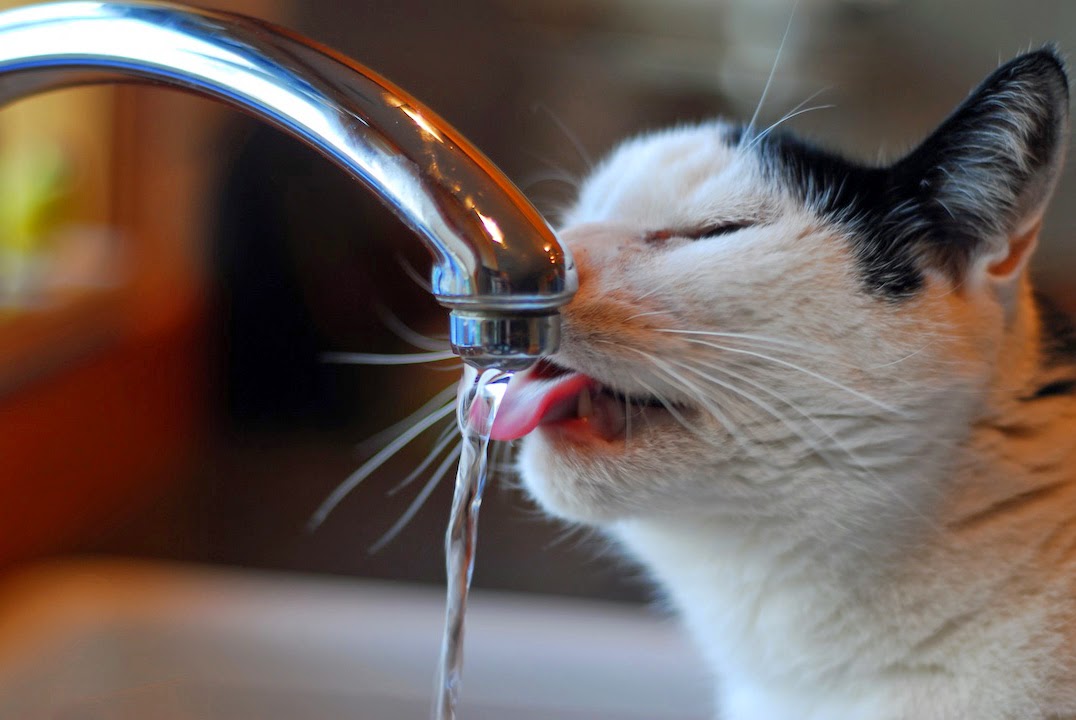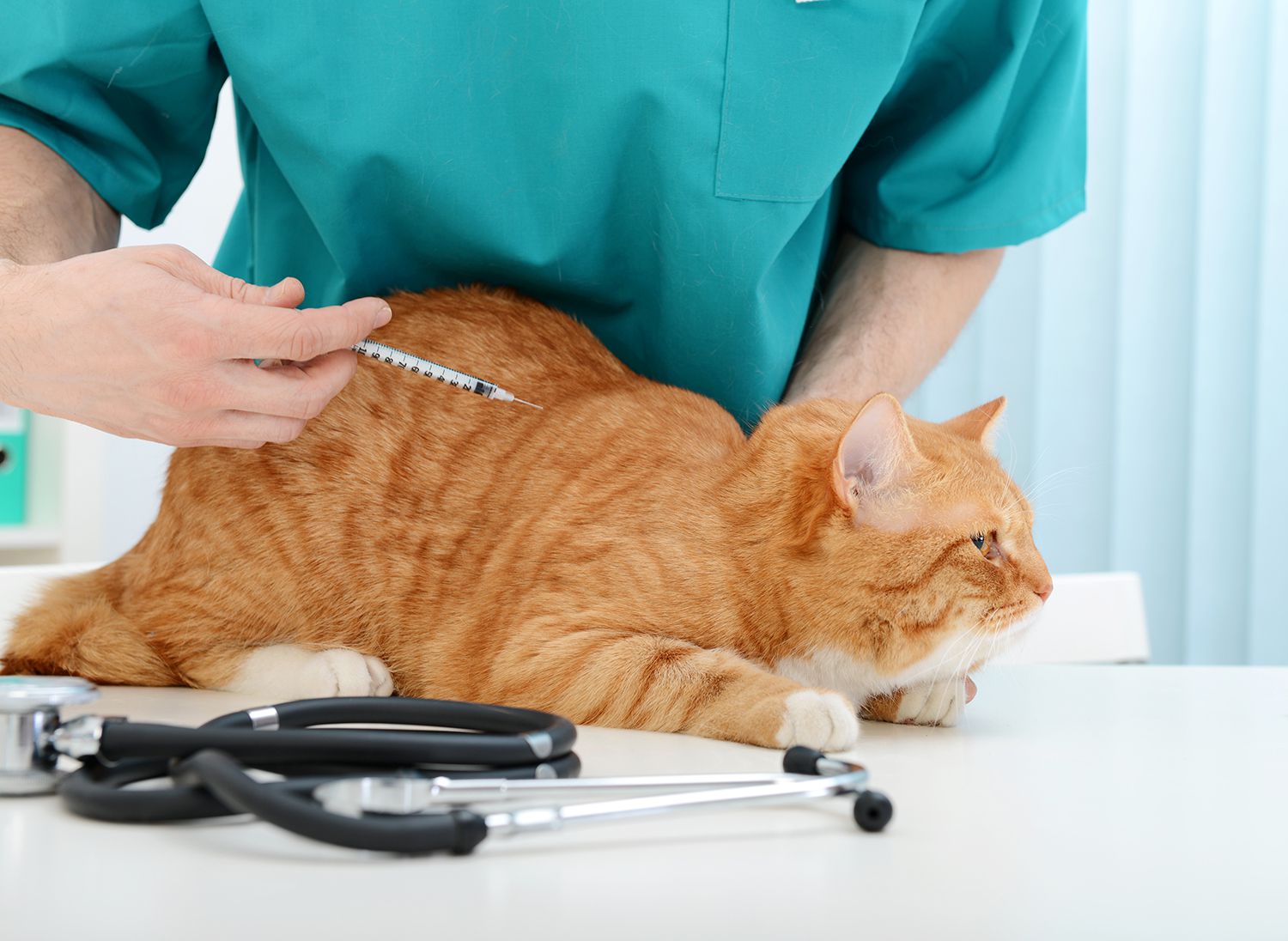Causes of Diabetes Coma in Cats
Diabetes Mellitus: The Primary Cause

Cats affected by diabetes mellitus are more likely to experience a diabetic coma due to various underlying factors. Diabetic coma occurs when an individual’s blood sugar levels become either severely high or low, leading to impaired brain function and altered mental status. The primary cause of a diabetic coma in cats is unmanaged diabetes mellitus.
The causes of feline diabetes mellitus are multifactorial, with age being the most significant risk factor. Middle-aged and older cats are more susceptible to developing insulin resistance and impaired glucose regulation. This age-related decline in pancreatic function contributes to the development of hyperglycemia, which can eventually lead to diabetic ketoacidosis (DKA), a complication that may result in a diabetic coma.
Obesity is another key factor contributing to feline diabetes mellitus. Cats that are overweight or obese often develop insulin resistance, making it challenging for their bodies to utilize glucose properly. As obesity exacerbates the condition, cats may experience more severe symptoms, including polydipsia (excessive thirst), polyuria (frequent urination), and polyphagia (increased appetite).
Genetic predisposition also plays a significant role in feline diabetes mellitus. Certain breeds, such as the Siamese and Burmese, are more prone to developing this condition due to their genetic makeup. While these breeds may not always exhibit symptoms of diabetes, they remain at higher risk than other breeds.
Environmental factors, including diet and lifestyle, can also contribute to feline diabetes mellitus. Cats that consume high-carbohydrate diets or have restricted access to physical activity are more likely to develop insulin resistance and impaired glucose regulation. Moreover, stress can exacerbate this condition, leading to an increased risk of developing a diabetic coma.
Other underlying medical conditions, such as pancreatitis, Cushing’s disease, and hyperthyroidism, can also contribute to the development of feline diabetes mellitus. Cats with these conditions may be more likely to experience complications related to unmanaged diabetes, including DKA and diabetic coma.
According to a study by Cornell University College of Veterinary Medicine, diabetes mellitus is the primary cause of feline diabetes coma.
The causes of diabetes coma in cats can be attributed to various factors, including hyperglycemia, which is a condition characterized by abnormally high levels of glucose in the blood.
According to the Cornell University College of Veterinary Medicine, diabetes mellitus is the primary cause of feline diabetes coma. Diabetes mellitus is a metabolic disorder that occurs when the body cannot produce enough insulin, a hormone produced by the pancreas that regulates blood sugar levels.
The exact causes of diabetes mellitus in cats are not fully understood, but several factors can contribute to its development:
Other factors that can contribute to diabetes coma in cats include:
Dehydration: Cats with diabetes are more prone to dehydration, especially if they have kidney disease or other underlying conditions.
Medication side effects: Certain medications can contribute to the development of diabetes in cats.
In summary, the causes of diabetes coma in cats are complex and multifactorial. Understanding these factors is essential for providing appropriate treatment and management strategies for feline diabetes mellitus.
Ketosis and Ketoacidosis
Diabetes coma in cats occurs when a cat’s blood sugar levels become too high due to untreated diabetes mellitus.
As a result, the body begins to break down fat for energy, producing _ketoacidosis_ , which can lead to a life-threatening condition.
The causes of ketoacidosis in cats with diabetes include:
Ketone production: When the body breaks down fat for energy, it produces ketones, which can accumulate in the blood and cause acidosis.
Dehydration
Prolonged fasting or starvation
Insulin deficiency
Dietary factors, such as a diet high in fat and low in carbohydrates.
Ketosis occurs when the body burns fat for fuel, producing ketones that can be detected in the urine or blood.
Ketoacidosis, on the other hand, is a more severe condition that develops when ketone production exceeds the body’s ability to compensate by increasing insulin production and excretion of ketones in the urine.
Cats with diabetes are prone to ketoacidosis , especially if they have:
Hypersomnolence (excessive sleeping)
Dehydration
Polydipsia (increased thirst and urination)
Early detection of ketoacidosis is crucial, as it can progress to a life-threatening condition if left untreated.
If your cat shows symptoms of diabetes coma or ketoacidosis, seek immediate veterinary attention.
Ketoacidosis occurs when the body produces high levels of blood acids called ketones as a result of uncontrolled diabetes. This condition can lead to a lifethreatening coma in cats, as stated by the American Association of Feline Practitioners.
Ketoacidosis occurs when the body produces high levels of blood acids called ketones as a result of uncontrolled diabetes.
This condition can lead to a life-threatening coma in cats, as stated by the American Association of Feline Practitioners.
The causes of ketoacidosis and subsequent coma in cats are complex and multifaceted. However, several factors can contribute to this serious medical condition:
Feline Diabetes Mellitus
Cats with uncontrolled diabetes mellitus are at risk of developing ketoacidosis. This is because high levels of blood glucose can lead to the production of ketoacids, which can accumulate in the body and cause a range of symptoms, including vomiting, lethargy, and confusion.
Insulin Deficiency or Resistance
Cats with insulin deficiency or resistance are more likely to develop ketoacidosis. This is because their bodies cannot effectively regulate blood glucose levels, leading to high levels of ketones in the blood.
Prolonged Fasting or Starvation
Protracted fasting or starvation can lead to ketoacidosis in cats, particularly if they have underlying health conditions. This is because their bodies may begin to break down fat for energy, leading to high levels of ketones in the blood.
Pregnancy or Other Underlying Medical Conditions
Cats that are pregnant or have other underlying medical conditions, such as kidney disease or liver disease, may be more susceptible to ketoacidosis and coma. This is because these conditions can impact their bodies’ ability to regulate blood glucose levels effectively.
Age and Weight Status
Senior cats or those that are overweight or obese may also be at increased risk of developing ketoacidosis and coma due to underlying health issues, such as insulin resistance or kidney disease.
It’s essential to seek immediate veterinary attention if you suspect your cat is showing symptoms of ketoacidosis. Prompt treatment can help prevent progression to a life-threatening coma and improve your cat’s quality of life.
Recognizing Symptoms of Diabetes Coma in Cats
Clinical Signs and Symptoms

Cats can be affected by diabetes coma, a life-threatening condition that requires prompt veterinary attention.
To recognize symptoms of diabetes coma in cats, it’s essential to understand the underlying causes and clinical signs associated with this condition.
Causes of Diabetes Coma in Cats
Cats can develop diabetes coma due to several factors:
Diet: Feeding your cat a high-carbohydrate diet can contribute to the development of diabetes, as it puts pressure on their pancreas to produce more insulin.
Genetics: Some breeds, such as Burmese and Siamese, are prone to developing diabetes due to their genetic makeup.
Age: Cats are more likely to develop diabetes as they age.
Obesity: Overweight cats are at a higher risk of developing insulin resistance and subsequently, diabetes.
Clinical Signs and Symptoms in Cats with Diabetes Coma
The clinical signs and symptoms associated with diabetes coma in cats can be severe and may include:
Initial Stages:
Lethargy or depression.
Increased thirst and urination.
Weight loss, despite increased appetite.
Advanced Stages:
Collapse or coma due to severe hyperglycemia (high blood sugar).
Seizures and convulsions.
Pupil dilation or lack of response to light.
Other Symptoms:
Creamy white discharge in the eyes and nose.
Foul breath odor.
Pale gums and tongue.
Seeking Veterinary Attention
If you suspect that your cat is experiencing any of these symptoms, it’s essential to seek immediate veterinary attention.
The veterinarian will perform a series of tests to diagnose diabetes coma in cats, including:
Complete blood count (CBC) and biochemistry profile.
Fasting blood glucose test.
Urine analysis and urinalysis.
A diagnosis of diabetes coma can be confirmed with a blood sample, which will show high levels of sugar in the cat’s blood stream.
Treatment for Diabetes Coma in Cats
The treatment for diabetes coma in cats usually involves a combination of medications and supportive care to manage the condition and prevent complications.
Medications may include:
Insulin therapy to regulate blood sugar levels.
Antibiotics or antifungals to treat any secondary infections.
Supportive care may include:
Fluid and electrolyte management to prevent dehydration and electrolyte imbalances.
Nutritional support, including dietary changes or intravenous nutrition, to ensure adequate nutrition.
The prognosis for cats with diabetes coma varies depending on the severity of the condition, the promptness of treatment, and the overall health status of the cat.
With proper management, some cats may recover from diabetes coma and lead relatively normal lives.
Prevention is Key
The best way to prevent diabetes coma in cats is through regular veterinary check-ups, maintaining a healthy diet, providing adequate exercise, and monitoring your cat’s overall health status.
Early detection and treatment of feline diabetes can help prevent the development of complications, including diabetes coma.
The American Animal Hospital Association notes that cats with diabetes coma may exhibit symptoms such as vomiting, diarrhea, lethargy, and difficulty breathing. In addition to these signs, cats with diabetes coma often display a decrease in consciousness or coma.
The American Animal Hospital Association notes that cats with diabetes coma may exhibit symptoms such as:
vomiting
diarrhea
lethargy
difficulty breathing
Cats with diabetes coma often display a decrease in consciousness or coma, which can be life-threatening if left untreated.
In addition to these symptoms, cats may also exhibit other warning signs such as:
excessive thirst and urination
weight loss despite increased appetite
increased urination frequency
cloudy or bloody urine
pale gums or blue-tinged lips
If you suspect that your cat is experiencing symptoms of diabetes coma, it is essential to seek veterinary care immediately. Your veterinarian may perform the following diagnostic tests to confirm the diagnosis:
physical examination and medical history review
complete blood count (CBC) and biochemical profile
urinalysis
blood glucose test
Early recognition and treatment of diabetes coma in cats are critical for a positive outcome. If you have concerns about your cat’s health or suspect that they may be experiencing symptoms of diabetes coma, don’t hesitate to consult with your veterinarian.
Treating Diabetes Coma in Cats: Emergency Care
Immediate Action Required

Treating a diabetic coma in cats requires immediate action and emergency care to prevent long-term damage or even death.
The first step in treating a diabetic cat in a coma is to provide oxygen and stabilize the pet’s vital signs. This may involve administering oxygen through a mask, intubating the cat if necessary, and closely monitoring its heart rate, breathing rate, and blood pressure.
A diabetic cat in a coma will require insulin therapy to lower their blood sugar levels and prevent further complications. A veterinarian will typically administer an initial dose of insulin, followed by regular monitoring and adjustments as needed to ensure the cat’s blood sugar levels remain within a safe range.
Other vital aspects of care include fluid administration to replenish lost fluids and electrolytes, wound management for any ulcers or skin breakdown, and addressing any secondary infections that may be present. In some cases, anticonvulsants may also be prescribed to manage seizures.
Radiographic imaging (X-rays or CT scans) may be necessary to evaluate the extent of potential complications such as kidney damage or pancreatitis. This can help guide treatment and ensure the cat receives prompt care for any underlying conditions that contributed to the diabetic coma.
It is essential for owners to work closely with their veterinarian, following a customized treatment plan to manage the cat’s condition and prevent future episodes of severe hypoglycemia or hyperglycemia. This may involve regular glucose monitoring at home, adjustments to insulin dosage, and making dietary changes to optimize carbohydrate management.
Preventing recurrence requires close collaboration between the owner, veterinarian, and veterinary team to identify risk factors and take steps to mitigate them. Factors such as ensuring adequate exercise, managing weight gain or loss, controlling stress, and avoiding over-exertion can all play a crucial role in maintaining good glycemic control.
Monitoring progress and adjusting the treatment plan as necessary are essential to prevent future episodes of diabetic coma. It is also vital for owners to recognize signs of impending complications (such as lethargy or weight loss) so they can take prompt action and seek veterinary care immediately if their cat’s condition worsens.
The American College of Veterinary Internal Medicine emphasizes the need for immediate veterinary attention when a cat is showing symptoms of diabetes coma. Treatment typically involves fluid therapy, insulin administration, and electrolyte management to stabilize the cat’s condition.
Treating a cat that has developed diabetes coma requires immediate veterinary attention and a comprehensive approach to stabilize its condition.
The American College of Veterinary Internal Medicine emphasizes the importance of prompt medical intervention when a cat is showing symptoms of diabetic coma, which can include lethargy, seizures, confusion, loss of coordination, and vomiting.
Upon presentation at the emergency room or veterinary clinic, the veterinarian will likely perform diagnostic tests to confirm diabetes mellitus and assess the severity of the condition.
The primary goal of treatment is to stabilize the cat’s condition by managing its fluid balance, electrolyte levels, and glucose control. This may involve administering intravenous fluids to correct dehydration and provide essential nutrients, as well as medications to manage electrolyte imbalances and prevent complications.
Insulin administration will be necessary to manage blood sugar levels and promote glycogen synthesis in the liver. The veterinarian may need to adjust the dosage of insulin based on regular monitoring of the cat’s blood glucose levels.
Supportive care, including oxygen therapy, cardiac monitoring, and careful management of vital signs, is essential to prevent organ failure and other complications associated with diabetic coma.
Patient stabilization will be a long-term process that requires close monitoring, frequent adjustments in medication regimens, and regular assessments of the cat’s response to treatment. It may take several weeks or even months for the cat to recover fully from the effects of diabetic coma.
Preventing recurrences is also crucial to maintain quality of life. This may involve adjusting diet and nutrition plans, administering medications to manage blood sugar levels, and scheduling regular veterinary check-ups to monitor the cat’s condition.
Home care should only be undertaken under the guidance and supervision of a veterinarian or experienced animal caregiver. Regular follow-up appointments with the veterinarian will be necessary to ensure that the treatment plan remains on track and any complications are promptly addressed.
- Best LeadsGorilla Alternatives for 2025 - April 19, 2025
- Best Coldlytics Alternatives for 2025 - April 19, 2025
- Best Brevo Alternatives for 2025 - April 18, 2025



